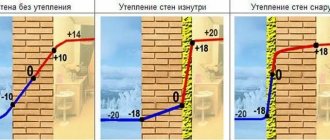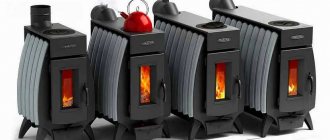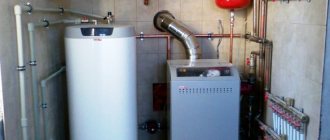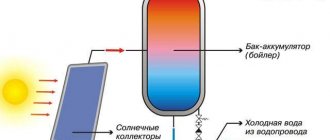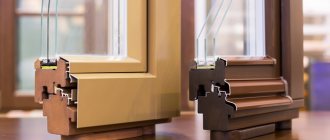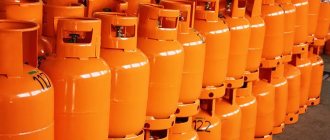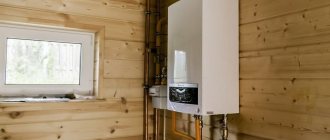With the onset of the winter months, coolant consumption increases sharply. The lower the temperature outside, the more difficult it is to heat the room. But in recent years, prices for basic coolants have begun to rise. And the forecast for the future is disappointing. Winters will not become shorter, gas will not become cheaper. After the long winter of this year, many had to think about how to heat a private home so that the family budget would not suffer.
In the past, everyone tried to connect the house to gas and use it for heating. This possibility does not always exist. Some home owners have calculated that it is now more profitable to change the heating system. There are other ways to reduce heating costs. Let's talk about everything in order.
Insulate the walls of the building
Before discussing options for heating a private building, it should be noted that a lot of heat is wasted. You burn gas, consume electricity, heat water. And the heat escapes through the walls and roof. Don't believe me? Take a walk along a private street in winter. Has the snow melted on the roofs of many houses? Why?
Heated air becomes lighter and tends upward. If the ceiling and roof are not insulated, heat penetrates outside, melts the snow on the roof, and heats the air around the building. The heat in the house does not stay and you have to constantly turn on the gas burner. And the foundation walls conduct cold and moisture. The room is constantly damp and cold.
Scientists have calculated that half of the home’s heat goes outside through the building’s structure. It will not be possible to insulate a building 100 percent. After all, the house must breathe. However, insulation work may well reduce heat loss by half.
There are many insulation options. For example, you can pump in liquid penoizol by drilling holes between the rows of brickwork. You can insulate external walls with foam plastic or mineral wool. A layer of expanded clay can be poured onto the ceiling.
The choice of materials for insulation is also constantly increasing. Polystyrene foam and mineral wool are cheap. But you can use other materials, for example, glass wool or polyurethane foam. In some cases, straw, hay, and sawdust are used as insulation.
Electric heated floors
I put this system in last place for two simple reasons:
- Expensive to operate. Unfortunately, electricity is expensive today and will become more expensive every year.
— We depend on electricity. No electricity. No heat
As the main heating, you should use only cable electric heated floors.
Infrared film can be used for comfortable heating.
Some tips on how to keep warm
If the house has heating radiators, cover the walls behind the radiator with reflective foil. The heat will not warm the wall, but will be reflected from the foil and will heat the room.
If you use gas for heating, be sure to install a gas meter. You will be able to control gas consumption.
We heat the house with wood
Many are looking for an alternative to gas heating. But is it possible to heat a modern house with wood? We are, of course, not talking about the traditional Russian stove on which our grandmothers cooked. Now there are cast iron and steel stoves that can be heated with coal or wood. Outwardly, they resemble the well-known potbelly stove, but have a number of advantages. Let us immediately note that the cast iron construction is more reliable.
Sellers of wood stoves claim that they can heat the entire house and that such heating will be cheaper than gas heating. Can you believe this? In order for such a stove to operate at full capacity, special wood is needed. You will need perfectly dry logs. It is also better to purchase only hard wood. Pine or maple logs will not work. You will have to buy oak or beech wood. Other wood will also burn in this stove, but the heat from their combustion will be much less.
Minuses
Now let's analyze the disadvantages of such heating. The stove will have to be installed in one room, which will heat up as much as possible. Less heat will flow into other rooms. When heating with gas, you distribute the body evenly in all rooms.
By turning on a double-circuit electric boiler, you can not only warm up the house. You will have hot water in the bathroom and kitchen. But you can’t connect wooden heating to a shower stall.
Firewood will have to be stocked and stored in a separate room. To maintain a pleasant temperature in the house, you will have to add firewood several times a day. The ash also needs to be raked out and taken outside.
Now about smoke and combustion products. Ventilation must be provided for them. Otherwise, there will be a threat to health or even life. The stove cannot be left unattended, otherwise a fire may occur if a spark falls on the floor or clothing catches fire from the hot surface.
You can purchase a boiler that runs on compressed sawdust. This stove is expensive, but has several advantages:
- fuel can be added once every 3 days;
- little ash is generated, it can be removed after a week or two;
- the heat transfer of this design is at the level of a wood stove;
- Sawdust cylinders are very light and take up little space.
Candle based heater
Sometimes there is a need to heat only one room or workplace. We can recommend purchasing a Doyle Doss thermal device. The American called his invention “Heat Trap”. The heat source is a burning candle. It turns out that when a candle burns, a lot of heat is generated, but it dissipates.
Heating with brine-water heat pumps
To implement the project, it is necessary to drill a well up to 200 m in depth. The pipes should be placed in it in a U-shape along with the solution. You can arrange a heat exchanger that will be located at a depth of at least 5 m. This is necessary to reduce the difference in the heat received in different months of the year.
Heating circuit based on a brine-water pump.
The depth and number of wells are determined based on the ability to obtain the required 50 W of thermal energy. It is obtained from each linear meter of a drilled well. As a result, alternative heating of a private house using heat pumps according to the water-water or brine-water scheme is characterized by minimal heating costs compared to indicators characterizing other types of heating systems.
Experience of European countries
If you have not yet decided how best to heat a private home, ask how they approach this problem in European countries. In many of these countries, prices for coolants are very high. Therefore, they have long been looking for methods to reduce the consumption of gas and electricity when heating rooms.
In Finland they began to build “passive” houses. This type of building allows you to consume a minimum amount of energy from external sources. A little later, such buildings began to appear in Germany. Energy-independent buildings can reduce heating costs.
An example of a European energy-independent house.
If the building is located in the south, where there are many sunny days, electricity is obtained thanks to solar panels. In northern countries, the sun cannot provide enough energy. Wind turbines are being built. The heat of the earth is also often used. After all, at a certain depth, even in the winter months there is a lot of heat.
A system of heat exchangers is installed in the ground. Ground air and heat pumps are used. During the winter months, the water is heated by the heat of the earth. It must be said that such a system requires large installation costs and pays off after several decades. If you decide to carry out such an experiment, then you should definitely insulate all the structures of the house, starting from the foundation walls and ending with the ceiling and roof of the building.
Among the current problems that interest a significant part of the owners of country houses is the question of whether it is possible not to heat a wooden house in winter. Naturally, at the same time, they quite logically want to know how exactly the structures and interior furnishings of the building will react to the periodic switching on of the heating system. And in general, what is better: a complete absence of heat during the winter calendar period or warming up the house with a certain regularity? To obtain a competent answer to the questions posed, you should carefully consider this problem.
Radiator heating
An equally popular option for heating a brick house. The choice of radiators is also great. My soul lies with steel radiators. Durable, beautiful, difficult to damage and also good heat dissipation.
Alternatives include aluminum, cast iron, and bimetallic radiators. I would not recommend cast iron to you. The last century, large volumes of water in the section and unjustified costs.
The radiator system comes with forced and natural circulation.
The advantages of the forced system are that all pipes can be hidden in the walls; small pipe diameters can be used for wiring. But there is also a minus. Such a system is connected to electricity due to the presence of pumps in the system.
With natural everything is reversed. The pipes come with a large diameter, but they are not dependent on electricity.
Optimal temperature conditions for a wooden house
Before answering the question of whether to heat a wooden house in winter or not, it is necessary to determine the optimal temperature regime for this type of building. Any professional builder will tell you that it is best to maintain the same operating conditions throughout the entire calendar year. In other words, if the house is constantly +20...22 degrees Celsius, then this will ensure maximum durability of such a building.
However, what if the owners do not plan to visit the house frequently in the winter? Continue to heat, spending considerable financial resources and leaving the heating system operating in automatic mode without control? Obviously, this option is not suitable for all owners of country houses. The reasons for this are obvious - a high level of expenses, essentially useless, as well as an increase in the risk associated with uncontrolled operation of the heating system.
In such a situation, a decision arises to stop heating during the cold weather. In this case, the next question arises about what will happen if you do not heat a wooden house in winter. No matter how strange it may seem, nothing terrible happens in such a situation. The temperature outside and inside the building decreases. This process is accompanied by a decrease in humidity levels, and moisture condenses on surfaces inside the building - on furniture, walls, floors or ceilings.
To understand the essence of the processes taking place, it is important to know that with a sharp drop in temperature, a one-time loss of moisture occurs, which quickly turns into frost. With gradual cooling, this phenomenon occurs slowly and may not be accompanied by any noticeable formation of condensation at all. In both cases, water affects building structures, finishes and furnishings either for a short time or very little.
Based on what has been said, we can draw an obvious conclusion. When heating is stopped during the cold season, especially when certain conservation measures are taken, a wooden house will not suffer any serious negative impacts. Of course, it is best to heat it all year round, however, a break in heating for the winter is not an insoluble problem.
Heating options depending on the type of energy used
We all understand perfectly well that the use of a particular heating system (HC) in a private home largely depends on the availability of certain types of energy resources, such as:
- gas is one of the cheapest options, at least for Russians. The difficulty lies in the fact that not all areas have a gas pipeline. The advantage of such heating is the ease of automation of all processes, but at the same time, safe operation of the system is possible only if high-quality equipment is used and highly qualified specialists are involved;
- firewood, coal, coke are traditional, but obsolete types of fuel for heating country houses. Despite their availability, their use imposes some inconveniences, for example, the impossibility or complexity of automating technological processes. This applies to stove heating. There are other solutions based on the use of solid fuel boilers. Thus, the intervals between subsequent additions of firewood in conventional boilers are approximately 7 hours, more advanced pyrolysis equipment allows you to increase it to 10-12 hours, and expensive pellet boilers allow you not to think about feeding CO for 5 days;
- Electricity is one of the most convenient types of energy carriers in terms of implementing a heating system for a private home, but at the same time it is also the most expensive. Every year the cost of electricity increases, and it is not uncommon for outages to occur in areas remote from cities;
- liquid fuel (for example, diesel) is another type of expensive energy carrier, the use of which for a heating system has its own nuances
Gas heating
The most economical type of fuel today is natural gas. Moreover, gas is also the most affordable, which is why the best heating option is heating a private house with gas. Even in cases where, for objective reasons, the supply of such energy is impossible, alternative solutions can be used. For example, install a gas holder - a kind of storage for liquefied gas. Considering the significant costs of installing such a system, do not forget that they pay for themselves over 5 years of its operation (when compared with electric heating). Another option that you can consider is using regular gas cylinders.
Heating a wooden house or brick cottage, provided gas is available, is greatly simplified.
Below we will look at schemes that are characterized by maximum efficiency in the case of using gas boilers. In the meantime, let's talk about what they are. We understand the types and features of gas boilers
| Characteristic | Views/Notes | |
| Power | Small – up to 65 kW | Suitable for gas heating of a private home |
| Average – up to 1700 kW | ||
| Large – up to 15,000 kW | Used primarily in industrial facilities | |
| Functions | Single-circuit. Designed exclusively for use in heating systems | |
| Dual-circuit. Designed for heating water in CO and the needs of residents | Flow type. Used under the condition that the volumes of hot water consumed are insignificant | |
| With built-in boiler. For full gas heating and hot water supply | ||
| Boilers for maintaining water temperature in swimming pools, etc. specialized solutions | ||
| Burner type | Atmospheric. Most often occurs when heating a private house with a gas boiler | |
| Ventilation. Used in industrial facilities | ||
| Traction | Natural. Chimney required | |
| Forced. Removal of gases due to fan operation | ||
| Installation method | Floor. Higher power, larger overall dimensions, durable, expensive | |
| Wall. Relatively inexpensive, compact, but less durable. Low power | ||
Schemes of a two-story house
The most common heating system in the CIS countries is water heating, where the role of the coolant is played by water circulating through a closed pipeline circuit. The water is heated in the boiler, after which it transfers heat to pipes, radiators or any other heating devices.
Compared to other options, water heating has the following advantages: water is an effective coolant;
- the system through which the coolant circulates is closed. This means that ideally, after its initial filling, the volume of water should not change over time;
- you can arrange water heating for a private house with your own hands - there is nothing complicated about it;
- It’s easier to create a circuit that ensures uniform heat supply to all rooms
The disadvantages include:
- the need to keep radiators clean - covered with dust, they no longer heat rooms so effectively;
- Compared to air heating, water heating does not provide as rapid heating of the air after switching on;
- system elements tend to corrode, crack, etc. This can affect not only the deterioration of the microclimate in the house, but also the safety of interior items, for example, if a pipe breaks;
- special requirements for the quality of the coolant - the absence or minimization of the amount of salts contained in the water;
- You can’t just turn off the CO in the winter when it’s a “good minus” and go on vacation to Egypt. The water in the pipes will freeze, increase in volume and inevitably burst them.
Depending on the forces due to which the coolant circulates inside a closed loop, CO is distinguished between natural (due to the difference in the density of hot and chilled water) and forced circulation (due to the operation of the pump). Next, we will look at the basic schematic diagrams used today in the design of CO for private two-story houses, but first, let’s determine what pipe routing is like in general:
- single-pipe wiring in country houses is rarely used, because in this case, there is a significant difference in the temperature of the coolant in the radiators. It makes sense to use such a solution for small houses with a small number of rooms;
- two-pipe wiring is “flexible” in terms of temperature control in individual rooms, but the system itself is material-intensive
Single pipe systems
The figure below shows two CO systems of a private house, which are of the single-pipe type (vertical row). The only difference is the presence of a jumper with a shut-off valve (shown in the diagram). The disadvantage of these schemes is that the lower radiators heat up to a lesser extent (after all, slightly cooled water enters them) and rooms on different floors are heated unevenly. But such heating has one undeniable advantage - when laying the pipeline, a minimum of materials is used, and the problem of uneven heating of radiators can be solved by installing a special jumper or increasing the number of sections for poorly heated radiators. To increase the circulation rate of the coolant, a circulation pump can be installed at the cold water inlet.
Let us immediately note that schemes with natural circulation are relevant only when it is possible to install the boiler below the level of radiators (for example, in a two-story house, in a house with a basement or basement). Moreover, for normal water circulation, a natural slope of the supply (with hot water - slope towards the radiators) and return pipeline (supply of cooled water - slope towards the boiler) is necessary. The expansion tank is used in almost all simple schemes. Installing a pump in any of the schemes presented in this article makes it more efficient, eliminates a number of disadvantages, and also allows you to install the boiler in any convenient place. Below is just one of the options for a circuit with a pump. Separately, we note that many modern boiler models are already equipped with pumping units.
The figure above shows a single-pipe system with artificial circulation (horizontal arrangement of pairs of radiators). The fundamental difference from the previous scheme is that in this case it is necessary to use a pump to maintain the required coolant circulation rate. Such COs are easy to install, but they are not without drawbacks: uneven heating and the formation of air pockets (solved by installing air bleed valves), dependence on power supply. And to conclude our consideration of single-pipe CO distribution, let's talk about one of the frequently used solutions - the Leningrad system, which is easy to implement in any home.
About the Leningrad system
What is the Leningrad wiring or, as it is often called, Leningradka? Imagine a pipe connected to a boiler (gas, solid fuel or electric - it doesn’t matter) (to save money - made of polypropylene) through which water circulates. All that remains is to connect the radiators to this pipe - the coolant will flow through them parallel to the supply circuit. In the video below you can see the design of such a CO.
Two-pipe systems
The diagram below shows a two-pipe CO system with natural coolant circulation and top wiring. Radiators heat up more evenly, but the cost of laying pipes is slightly higher than in the above schemes. Adjustment of the heating of individual radiators is possible through the use of shut-off valves.
In the diagram above we see a two-pipe system with natural coolant circulation, but with lower wiring. This solution is especially convenient if the boiler is located in the basement, and the pipes play the role of an additional source of heat in the house. Recently, instead of using traditional heating with wood, they are implementing the latter scheme, especially when the site is electrified (and this is far from uncommon) and the owner values maximum comfort. Thus, on the ground floor, thanks to the lower pipe distribution, it is possible to implement a “warm floor” system.
The effect of irregular heating on a wooden house
It remains to be seen what will happen if you rarely heat a wooden house in winter. Without a doubt, such a temperature regime will be the most unpleasant for both the building structures of the building and the finishing done inside, as well as furnishings. The reason for the problems is as follows.
When the air in the house is heated, the frost formed on surfaces inside the building quickly melts. This leads to increased humidity. At the same time, the surfaces of walls, ceilings, floors and even furniture continue to remain cold for several more hours, as they heat up much more slowly than air masses. As a result, condensation forms on them, which takes a lot of time to dry.
Brick oven
So, as mentioned above, for a small building it is enough to build one stove, which will be heated with wood or coal.
The stove model must be chosen in such a way that it can not only heat the premises, but also be an assistant in cooking.
To ensure that this heating structure does not cause any inconvenience and is as efficient as possible, you need to choose a suitable location for it. A well-placed stove can easily warm two rooms and a kitchen.
Such a stove will successfully heat several adjacent rooms.
For example, this model shown in the figure would be a good option for heating three rooms. You need to know that the heat transfer from the stove depends on the surface area of the building, i.e. if one side of the stove opens into the room, it will be fully heated. In addition, the massive structure takes much longer to cool down. By heating the building in the evening, you can be sure that it will transfer heat into the room until the morning.
The stove must be laid during the construction of a house, but its foundation must be separated from the general foundation of the building. It is possible to install a brick stove in an already built house, but this will be more difficult, since you will have to raise part of the floor and make a hole in the ceiling and roof to install a chimney.
General diagram of a home stove heating system
This diagram clearly shows the structure of the building, the structure of the foundation, the chimney channels and the passage of the pipe through the floors with all the necessary parameters that must be adhered to.
What happens in the house in winter if it is not heated?
In winter, the air temperature in our house drops. What is characteristic of cold air? The fact that the amount of moisture in it decreases. It decreases, and significantly! Dozens of times. What happens to the moisture that was in the air while it was warm? Well, she definitely needs to go somewhere! It usually falls out of the air and settles on surrounding surfaces in the form of frost. The frost, by the way, also dries up over time and dryness reigns in our house.
What happens to the body in the cold? It's drying. This is what I remember as a child. I grew up with my grandmother. Grandma was terribly businesslike. This is what I remember now. The whole family depended on her. Moreover, she managed the family according to Domostroi and was the clear head. My parents were hiding from this Domostroy each at their own work, and I had nowhere to hide, so I was exclusively with my granny and I owe my meticulous character, perseverance and determination solely to her. I also inherited from her a fundamental love for Domostroy, but this is not the subject of the article and I am not going to talk about it. Do not worry.
So what am I talking about? Oh yes! Grandmother washed clothes in winter and dried them in the cold. And I kept asking, “Does the laundry dry in the cold? “The grandmother answered that it dries, and very well, and the stronger the frost, the better it dries. I didn’t understand this then, but I believed it, because, as I already said, my grandmother was our leader, and her authority was very great. Now that I myself am already a grandfather (in appearance, not in status) I understand that grandma was right. Things dry out in the cold. The walls are drying, the trim is drying, the furniture is drying. Everything that contained moisture gets rid of this moisture. What happens to a thing when moisture is removed from it? It shrinks a little in size. People say that such a thing has dried up.
How to build a stove with an oven and for heating
It is best to start building a stove in the summer, when the air temperature is more or less constant. To start building a stove you should have: approximately 220 bricks, 3 doors for the firebox (about 13cm by 13cm), a cleaning door (about 14cm by 14cm), a cast iron hob (size 38cm by 35cm), an oven (size 32 cm by 28 cm by 42 cm), asbestos-cement sheet, grate bars (size 20 cm by 30 cm), metal strip 4 millimeters thick (size 35 cm by 25 cm), containers for mixing and soaking clay, trowels.
Recommendations for construction
Before building the furnace, we need a foundation for it. We select the foundation based on the characteristics of the soil. After the foundation is completely dry, you can start building the furnace. Take the construction of the foundation with full responsibility.
We take our drawing of the stove, prepare the tools (level, plumb line, tape measure, trowel.) For training, you can first try to lay the stove without clay on dry bricks. We will number the rows from the beginning of our oven. Don’t forget to inspect the bricks for defects and soak them in water.
When making a stove, be sure to check the evenness of the rows of bricks using special tools. Such as level and plumb. The verticality of the masonry wall is checked by plumb line, and horizontality by level. If you do not follow these recommendations, the masonry may turn out crooked and even fall apart.
- We carry out the first two rows of bricklaying according to the drawing; they will take us 20 bricks. We check these rows with a level especially carefully (crooked base - crooked stove)
- From the third row we begin to lay the ash pans and install the door on the wire and fastenings.
- Fourth – we continue according to the drawing (do not forget about the order of the bricks)
- Fifth - we install grates with a gap between them and the bricks, then fill them with sand and tie the ash pan door on top with bricks.
- Sixth row - we install the furnace door by first wrapping the door frame with an alabaster cord.
- Seventh – we continue to raise the walls, do not forget about the order.
- The eighth is similar to the seventh.
- Ninth - we tie bricks around the top of the fire door and begin to make a smoke collector.
- Tenth – we continue to assemble the smoke collector.
- Eleventh – we finish the smoke collector.
- Twelfth - we separate the cooking zone and the smoke exhaust zone by laying a metal strip that will support the brick laid on its edge. Install the hob.
- Thirteenth - laying the brick on the edge, we continue the row.
- Fourteenth - similar to the previous row.
- Fifteenth – we cover the cooking chamber with a sheet of asbestos cement.
- Sixteenth – we begin to construct the bottom of the lower channel located horizontally.
- Seventeenth – install the door for cleaning. And we continue the walls.
- Eighteenth - similarly to the previous one, we seal the door for cleaning. And we continue the walls.
- Nineteenth - we tie bricks around the top of the door and lay a lintel in the center of the chimney.
- Twenty – we raise the walls.
- Twenty-one - we build a cleaning hole.
- Twenty-two - we finish collecting the smokestacks. Now we install the oven and continue working according to the drawing until the 27th row.
- Row 27 – leave holes between the bricks for cleaning.
- Row 28 is similar to the previous one.
- Row 29: completely cover the oven.
- Row 30 is similar to the previous one.
- Row 31 is similar to the previous one.
- Row 32: We build a chimney and take it outside.
https://www.youtube.com/watch?v=bhcUosiua18
What happens when we arrive at an unheated house and turn on the heating?
The air becomes warmer and can already hold tens of times more moisture. If it can, it means it can accommodate it. First of all, the frost melts and goes into the air. But here's an ambush! Furniture, walls and all other objects heat up more slowly and remain cold. This means that they will be wet, because they cool the air around them and moisture falls out of it again. Only in the form of dew, not frost. In fact, it turns out that frost melts on things and they become wet. When will things become dry? When they are heated to a temperature that will allow them to dry. Not earlier. Moreover, some of the moisture will go into the air, and some will be absorbed into things, be it furniture or a wall. It is clear that different materials absorb differently. Breathable materials are highly absorbent. Non-breathing – weak. Plastic does not absorb moisture at all, so it can only dry out. The same applies to wood coated with oil paint or varnish.
Water copper-aluminum convectors
They look very much like radiators and are great for heating a brick house. Mounted exactly the same way. They hang on the walls identical to their radiator brothers. But they differ significantly in properties.
- Convectors work on the principle of convection and warm up the entire room in a matter of minutes. At the same time, heating radiators do this in just over an hour.
- As quickly as convectors heat a room, they cool down just as quickly. It’s hard to call this a minus. But such a property is available in the arsenal. Thanks to these properties, weather-compensated automation becomes useful. Which will automatically regulate the temperature inside the house based on weather conditions.
- Convectors cost 1.5-2 times more than radiators due to the expensive materials used and the manufacturing technology itself.
If you ask me what to choose between radiators and convectors, I will always answer that convectors are better.
How and why does furniture dry out?
Now we can roughly understand why furniture is drying out. Furniture dries out because moisture comes out of it. Evaporates. The components that make up the furniture shrink, dry out, and gaps may form between the pieces. Notice! In order for a thing to dry out, it only needs to freeze and stay in a cold house for a while. Whether you heat your house periodically or not is the second question.
But why does furniture dry out? Because it is made poorly. For example, it is made of wood, which expands very significantly when wet and shrinks just as significantly when dry. Or maybe the furniture is not painted or varnished? Then it will absorb well and dry well and dry out. I had a cute wooden flower stand. It was made in an antique style and was decorated to look like mahogany. Time passed, the varnish evaporated somewhere, and after many years of faithful service the thing dried out completely. On the one hand, it’s a pity, but on the other, it’s his own fault. It was necessary to update the varnish.
When furniture is made with high quality, the boards are carefully selected according to their pattern and structure. A strict selection of materials is used to check for knots and other defects, high-density wood, high-quality adhesives, varnishes and paints are used, and so on and so forth. Such furniture does not dry out. But it also costs a lot of money. This also seems understandable.
Criteria for evaluating the optimal heating system for a brick house
To choose the heat source that is most justified from all points of view, please note that it must meet the following criteria:
- provide the house with a sufficient amount of thermal energy;
- have minimal operating costs;
- work as autonomously as possible;
- have a reasonable price;
- does not require additional costs, as well as special knowledge and skills for everyday operation.
Next, we will analyze the most popular heating systems, from which you can independently choose the most suitable one specifically for your case.
What not to do when heating a frozen house?
Do not immediately put a kettle and pots of water on the stove. It is clear that the steam that is formed during boiling will form moisture on things and on the bed, by the way. And you shouldn’t turn on the gas open either. When gas burns, a fair amount of water vapor is formed.
The summary will be short but succinct. Don't save money! Keep in mind the questions described in this article, and everything will be not even good, but just great. In the end, you can use a dry bedside table if you don’t bother with such trifles!
With wishes of happiness, warmth and normal humidity Dmitry Belkin
Air heating
This is relevant if you have a country house or a house where you rarely visit. There is no water in such a system and, accordingly, there is nothing to freeze when you are away from home for a long time.
Very often such a system can be found in American films. For example, the film "Home Alone".
This heating system for a brick house is a little out of our profile. Therefore, I will not risk delving deeply into it.

